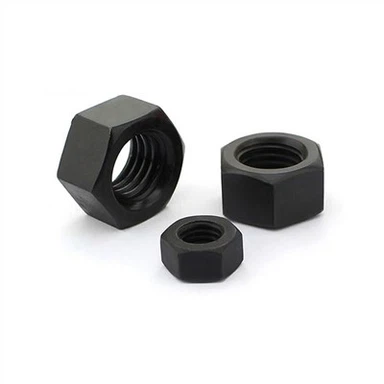Why Specify The Mechanical Properties Of Fasteners?
May 12, 2023
1. The era when only material grades are specified
In the 1950s, national standards such as GB38-58 "Technical Conditions for Bolts" and GB61-58 "Technical Conditions for Nuts" promulgated for the first time in my country only stipulated the material grades of fasteners. At the same time, in foreign countries (mainly the former Soviet Union, East Germany and other "socialist countries") "aid projects", the standards for fastener products at all levels only stipulate the material grades of the products, and the "standards" of local enterprises Parts workshop/section" is responsible for producing the required fastener products.
2. Specify the mechanical properties of fasteners
The professional development of fasteners promotes the design and selection of fasteners, and the improvement of standardization level. With the implementation of the national standard "fasteners" nationwide, especially the former Second Industrial Bureau of the First Ministry of Machinery Industry is responsible for centralized management. , and the “Ten Standard Parts Factories” that have been established one after another have gradually emerged with the advantages of specialized and concentrated production of fast, high-quality, and economical fastener products. Fastener products. However, due to the different processes used in specialized centralized production, the contradiction between "specified material grades" and "specialized centralized production process" is prominent and directly affects the development of specialized production. As the so-called advanced technology requires new equipment, tooling and molds, especially special materials suitable for cold heading technology, otherwise the expected effect will not be achieved.
3. The mechanical properties of fasteners depend on the material and manufacturing process
If the same type of fastener is required, such as bolts and the same specification, such as M16×80, when the same material grade is used, such as No. 35 steel, and different production processes are used, the mechanical properties of the obtained bolt products are different. If expressed in approximate mechanical performance grades:
1) Cutting process: maintain the original performance index of the material, which is equivalent to grade 5.8;
2) Hot forging process: basically maintain the original performance index of the material, which is basically equivalent to grade 5.8 or grade 5.6;
3) Cold heading process: the tensile strength is improved due to cold work hardening, which is equivalent to grade 6.8;
4) Cold heading forming-quenching and tempering (quenching and tempering) treatment: equivalent to grade 8.8.
It can be seen that for general-purpose (or commercial) fasteners, even if a material grade is specified, the mechanical properties that can be obtained are different due to the use of different processes. Therefore. For general-purpose (or commodity) fasteners, it is neither scientific nor reasonable to specify material grades. This design concept has long been outdated and abandoned. Relatively speaking, replacing the specified material grade with the specified mechanical performance level as much as possible is an internationally recognized, advanced and reasonable fastener design and selection concept as early as the 20th century.






